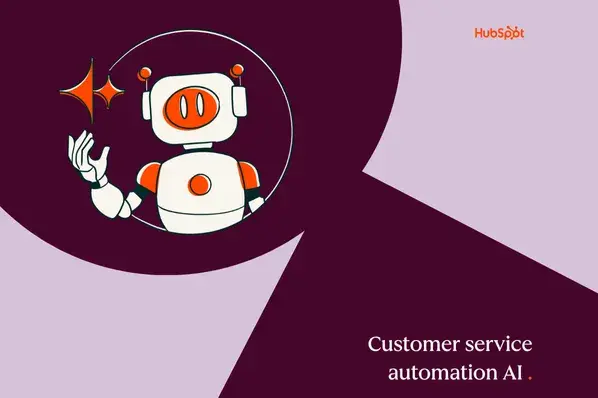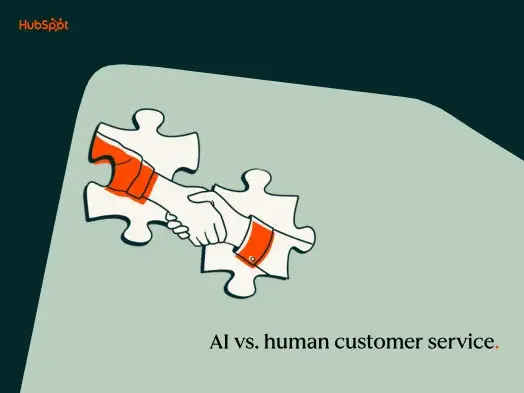AR technology supplements reality with added digital elements. Computer-generated content is overlaid onto the real world — and the actual reality becomes ‘augmented.’
That might sound complicated, but chances are you've already used or heard of some form of AR technology. For example, AR is frequently used by TV commentators when discussing live sports, like in the example below.

The most famous example of AR in recent years is Pokémon Go. If you‘re unfamiliar with the app, it superimposed game elements onto the real world. Pokémon would appear on your screen as if you were seeing them through the lens of your device’s camera.
Now that we‘ve covered what the technology is, let’s review how it can impact customer experience.
How AR Improves Customer Experience Examples
AR can help businesses, both online and off, enhance how they interact with customers. AR offers the chance to overlay information, images, or other content onto a customer's view of the world.
The seven examples below show how AR can improve customer service. They include applications you can provide customers, as well as ways AR can help your staff. They're far from the only ways you can use AR, but they reflect strategies being applied by various companies.
1. Training employees for improved customer understanding and experience.
Human interaction and understanding is a big part of customer service. Many people want to speak to a knowledgeable person when browsing products, making a purchase, or lodging a complaint. This makes the training you give your service agents critical.
AR can make training quicker and more efficient. Take, for example, PBC Linear. Its staff must be able to expertly follow and explain each step of the process to other internal staff and potential customers. Having only a passing familiarity with product ranges isn't good enough, so by providing AR technology to follow and answer questions, they can onboard with more efficiency.
The only way staff can reach that level of expertise is through hands-on experience. AR apps can deliver that experience without a staff member having to physically handle every item. AR models can replicate a real product so you can train your staff in a fraction of the time.
2. Removing uncertainty from purchase decisions.
The ecommerce market's estimated worth was over $25 trillion in 2019. Despite that, there‘s still a significant drawback to shopping online: consumers can’t physically assess and examine a product before purchasing it.

As you can see in the image above, return rates for products bought online are much higher than brick-and-mortar stores. Having such high rates of return is an issue for online retailers as it nullifies all the hard work they put into their SEO and marketing.
Fortunately, AR can address this issue. Interactive apps can use AR to give consumers a better-rounded impression of a product. For example, the IKEA Place app lets users ‘place’ furniture in their home with just their phone or tablet.
This AR helps improve the customer experience at both ends of the buyer's journey. It removes friction before a purchase by showing the customer how the product will influence their everyday lives. And, by having better judged a product at the outset, customers will be less likely to return it later.
3. Offering advice or adding value via interactive packaging.
AR‘s impact on customer service isn’t limited to the pre-sale process. In fact, the most exciting uses of AR come at the point of sale. One of the best examples of this is the concept of interactive packaging.
Interactive packaging gives customers a more engaging and valuable experience via AR. Customers can point their phone at a product's packaging and see compelling visuals.
Heinz, for instance, has used interactive packaging to deliver useful, practical insights. Way back in 2011, the condiment brand used AR to give customers a range of recipes using tomato ketchup.
Other global brands have taken a more light-hearted approach. Cereal makers like Nesquik and Wheaties offer AR games to play at the breakfast table. No matter the exact use, interactive packaging is a further example of AR boosting customer experience.
4. Presenting try-as-you-buy experiences.
At the point of sale (POS), AR delivers a two-pronged benefit. You can leverage the tech at this point in the buyer journey to offer ‘try-as-you-buy’ experiences. This can help you boost sales because the apps help overcome customer objections.
The easiest way to explain how these AR apps work in practice is with an example. L‘Oréal’s, ‘Style My Hair’ app is one of the best around as it lets users give themselves virtual makeovers. A customer considering whether to buy a particular hair dye can see how it will look before purchasing.

Virtual dressing rooms are another example of an AR-powered experience. They're a convenient alternative to trying clothes on in-person. Dressing Room by Gap provides a model for how such apps work.
Shoppers choose their desired garment before an AR-generated model tries it on. The customer can then look at the clothes and their fit from every angle.
5. Identifying and reporting product faults or malfunctions.
Reporting product faults can often prove tricky for many customers. Often, customers won‘t understand a product well and will struggle to explain what’s gone wrong to a customer service agent.

Many firms are starting to provide customers with AR apps for reporting faults. Customers can hold their phone up to a broken product and view the parts in real-time. That makes it simpler for a customer to report how the product has failed to a service agent.
6. Providing self-service support.
AR can help customers avoid customer service staff altogether. Lots of businesses are using AR for self-service support after a purchase is made. Using an AR app, customers can point their phone at a product and get an in-depth self-service overlay.
That overlay puts resources like FAQ pages and helpsheets at the customer‘s fingertips. They can find answers to common questions, which will save them time and free up more of your team’s resources. Companies will have fewer customer queries and customer satisfaction will be higher as users can independently resolve issues.
Mercedes, for instance, has leveraged AR in its Ask Mercedes virtual assistant. Through the assistant, drivers can scan an element of their vehicle and have its functionality explained to them. They can also ask questions about any problems or faults in its operation. Combined with an AI chatbot, the AR element of the assistant makes it much more user-friendly.

7. Intelligent maintenance advice and user manuals.
The support that you provide post-sale customers isn‘t always about resolving faults. You’ll get lots of goodwill from customers if you help them use and maintain products over time. Providing this additional support helps build brand loyalty and makes it more likely for customers to repeat purchases.
In the past, firms would support product use and maintenance via user manuals. But, now with the advent of AR, companies can do a lot more. Many global brands, including Hyundai, already offer AR-based user manuals. As you can see in the image below, the car manufacturer has provided AR user manuals for its vehicles since 2015.

Now, drivers no longer have to refer to bulky booklets when they have questions about their car. When they need to perform a routine task, they can point their phone at the relevant part of the car and the AR manual provides them with information about the part and instructions on how to complete the task.
Takeaways for Service Teams
1. AR can be a way to enhance customer engagement.
Incorporating augmented reality into customer experiences can create a more immersive and interactive environment, boosting engagement levels. It allows service teams to showcase products, services, or solutions in a visually appealing and memorable way, leaving a lasting impact on customers.
2. Problem resolution could be made easier.
AR can assist service teams in diagnosing and resolving customer issues more efficiently. By using AR-enabled devices, agents can overlay instructions, tutorials, or step-by-step visual guides in real time, helping customers troubleshoot problems or perform tasks independently.
3. AR can provide more personalized support.
Augmented reality enables service teams to provide personalized support tailored to each customer‘s unique needs. Through AR-based applications or devices, agents can offer real-time guidance and demonstrations specific to the customer’s situation, delivering a more personalized and effective support experience.
4. AR can enhance training and onboarding.
Incorporating AR into training programs can enhance knowledge retention and accelerate the onboarding process for service teams. By simulating real-life scenarios or providing interactive learning experiences, AR enables employees to learn and practice skills more effectively, leading to improved overall performance.
5. AR can give you that competitive advantage you're looking for.
By leveraging augmented reality in customer experiences, service teams can differentiate themselves from competitors and provide a distinctive value proposition. Integrated AR solutions can showcase innovation, commitment to customer satisfaction, and a forward-thinking approach, attracting and retaining customers who value cutting-edge technology and exceptional service delivery.
See how AR can change your customer's experience.
AR is a real game-changer and it's changing how people communicate and interact. Its impact across an array of different fields is likely to expand as the technology matures and develops, especially in the area of customer experience, where AR apps and other solutions are becoming more widespread.
Editor's note: This article was originally published November 2019 and has since been updated for comprehensiveness.










![How AI Can Unlock Customer Insights [+Expert Tips]](https://53.fs1.hubspotusercontent-na1.net/hubfs/53/customer-insights-ai-1-20241101-2082956.webp)

